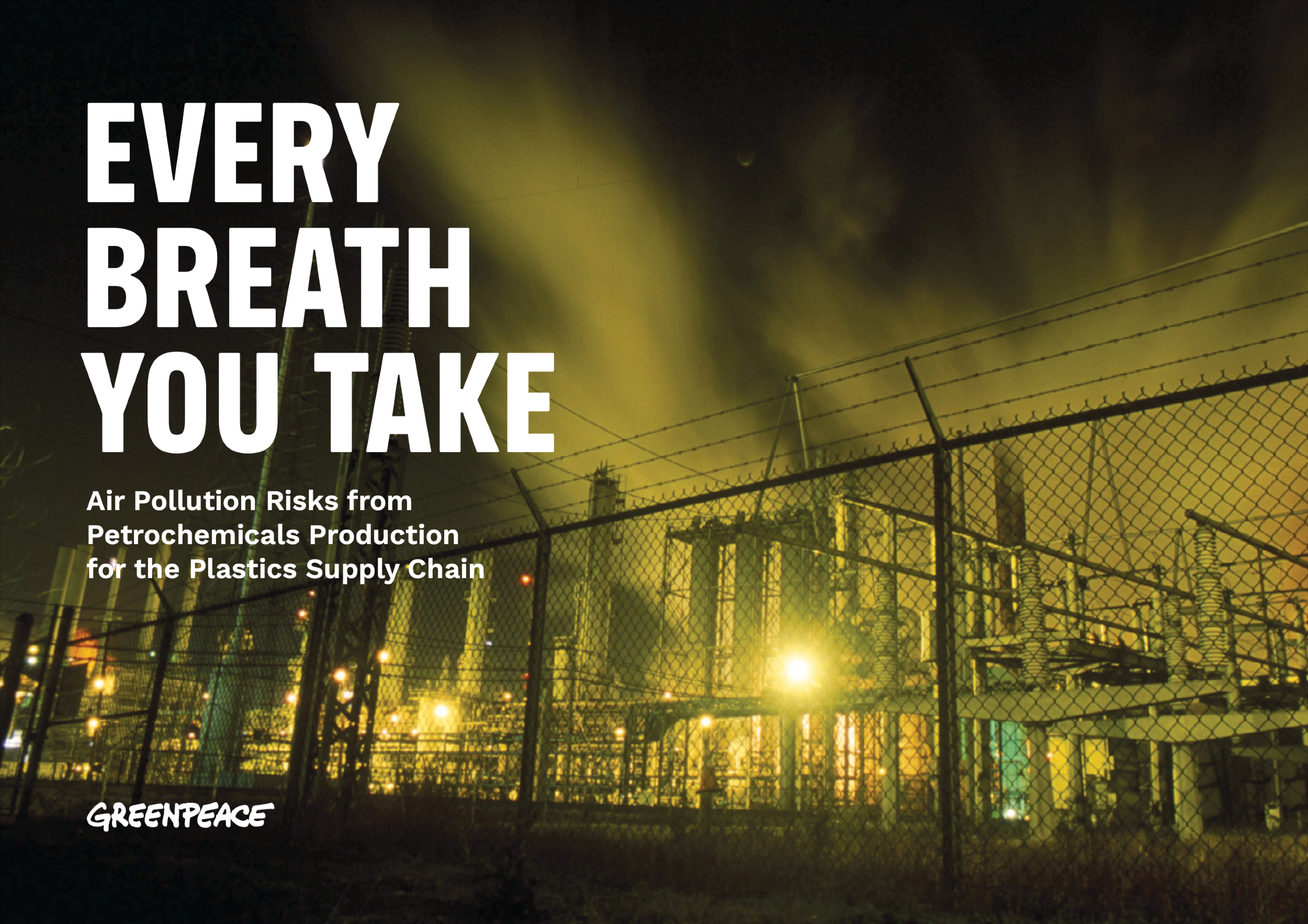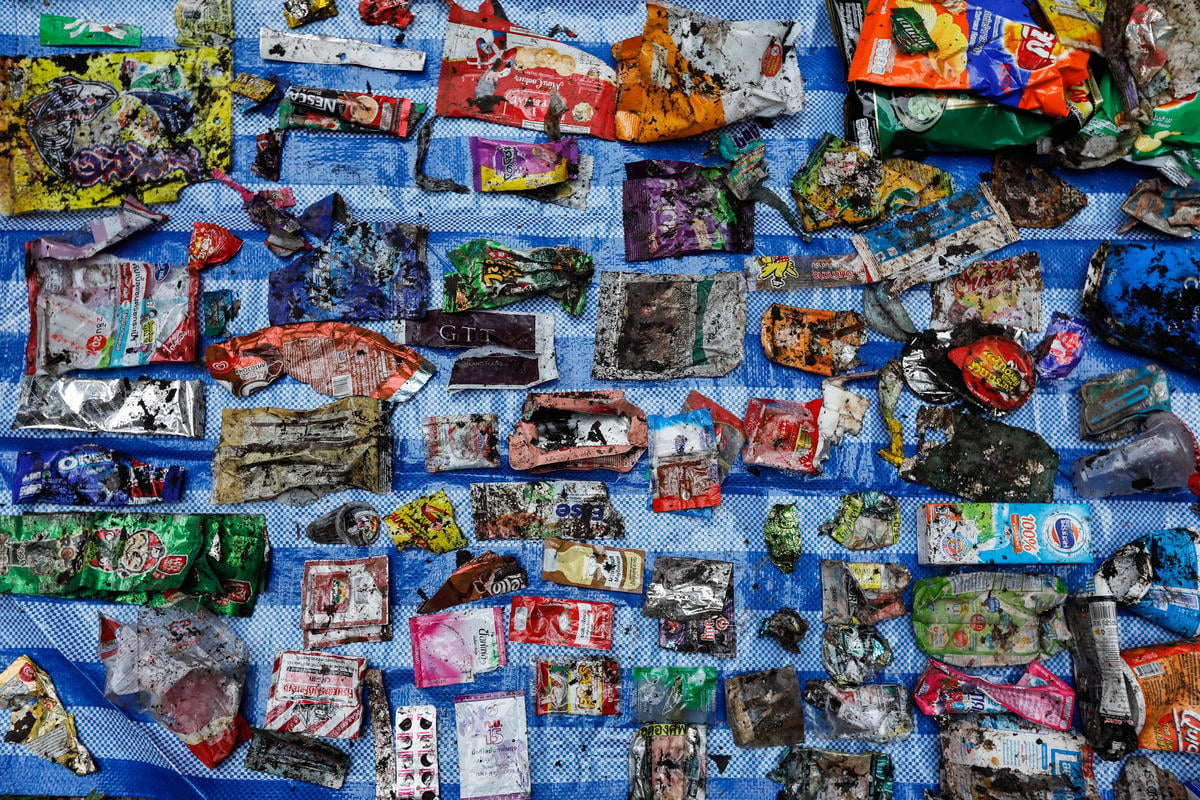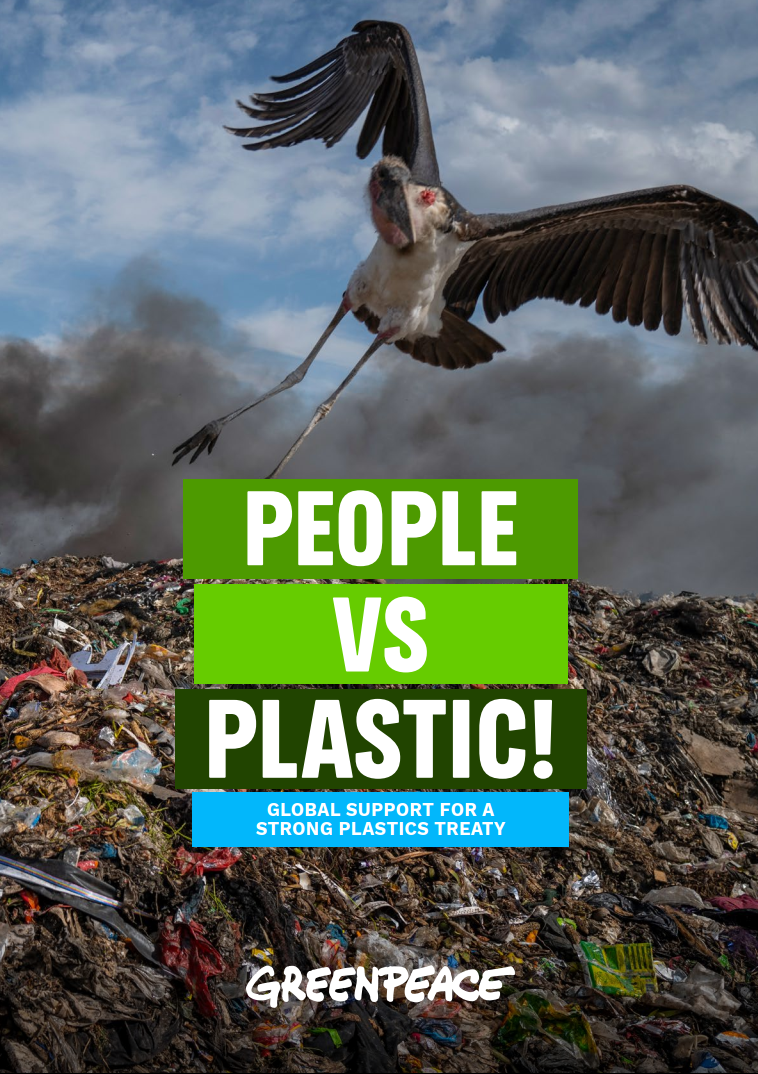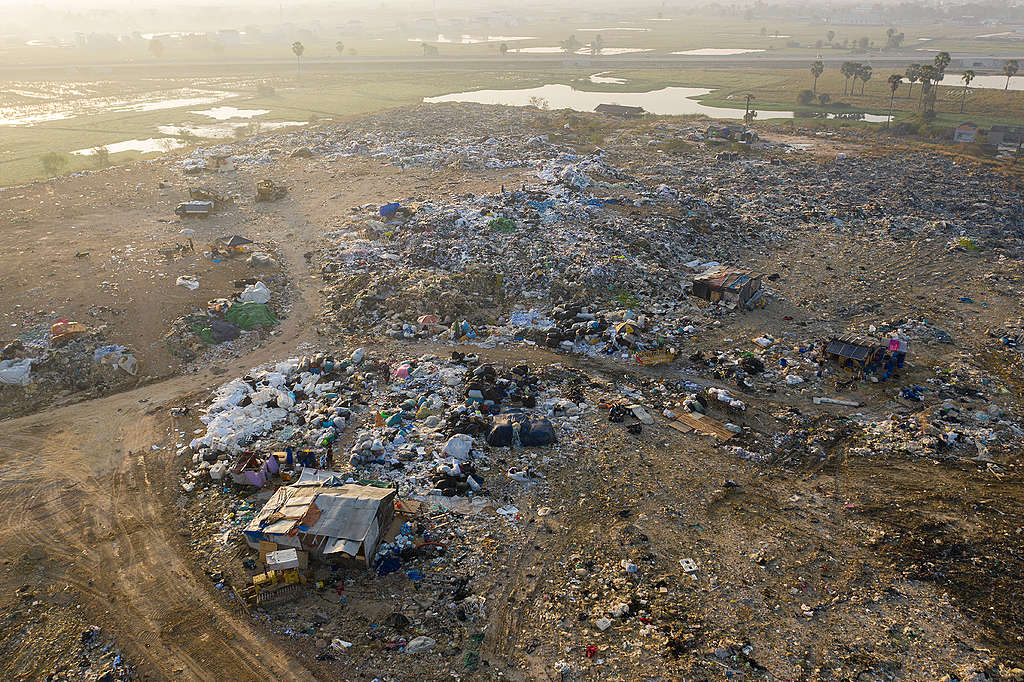
What’s going on?
An investigation by Unearthed has found that garment waste from clothes made for Nike, Ralph Lauren, Diesel and other big brands is being burnt in brick kilns in Cambodia. The scraps are mostly offcuts from local factories that manufacture clothing for these leading fashion brands. These factories dispose most of their textile waste at a landfill or elsewhere through licensed waste disposal companies. But through a web of middlemen, some of the waste is sold to kiln owners as cheap fuel – despite this practice breaching environmental laws and regulations.
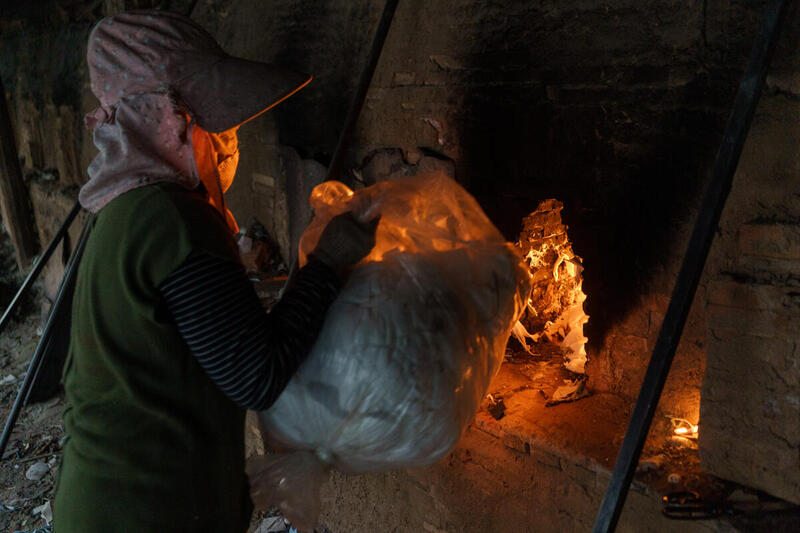
© Thomas Cristofoletti / Unearthed / Greenpeace
To manufacture bricks, workers move dried slabs of clay by hand into the kilns, where they burn for a couple of days in temperatures reaching up to 650C. To maintain such heat, the kilns need to stay fired and workers burn fuel – in some instances a mix of garment waste and wood – around the clock.
As the majority of these garments are likely to be made from polyester, the burning of this plastic exposes bonded workers to toxic fumes and microplastic fibres. See the fashion brands’ replies here.
A closer look
Despite the claims of sustainability by big brands, today’s fast fashion system depends on shifting its waste problem onto countries in the Global South where the lack of regulation and enforcement has led to the exploitation of workers and the environment.
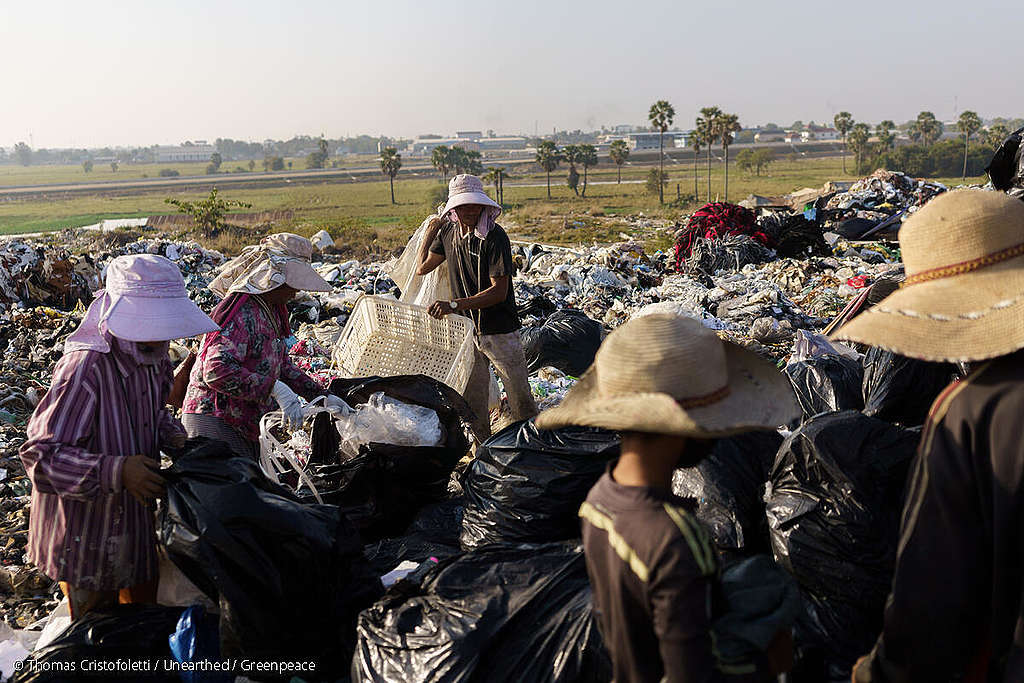
For fashion consumed in the EU, 84.7% of the environmental impacts take place outside the EU, mostly in Asia. In fact, Cambodia’s economy heavily relies on the apparel industry- the biggest employer in the country. Consequently, it has also become the country’s biggest industrial waste producer, generating no less than 90,000 tons of garment waste per year.
The problem in Cambodia has been heightened by the pressures of Covid-19, where brands suddenly dropped their orders, leading to the closure of some factories and greater insecurity for workers- mostly farmers who have already been impacted by the impacts of climate change on the country’s local agriculture and fisheries. Many have been forced into debt bonds with brick kilns in order to survive – a form of modern-day slavery.
The Unearthed investigation shows that without transparency about actual practices on the ground, these big brands’ claims of zero-waste and worker standards in supply chains, even including the avoidance of modern slavery, are no more than greenwashing.
What needs to happen?
When the EU implements its new textiles strategy, it has the opportunity to make full transparency of the environmental impacts and conditions for workers in fashion supply chains a legal requirement.
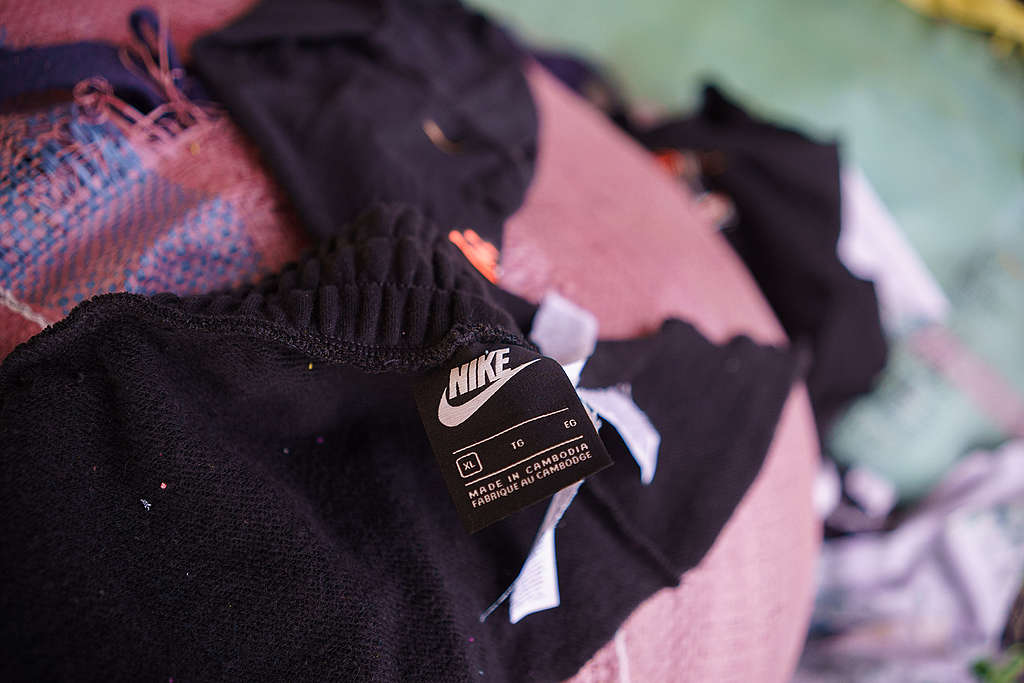
© Thomas Cristofoletti / Ruom for Unearthed
While the EU must now make sure that both environmental and social problems are regulated in global supply chains, we need global fashion brands to act on their wastefulness and stop their exploitation of the countries and people of the Global South. The industry needs to make a U-turn away from fast fashion, and start producing fewer clothes that are also designed to be better quality, longer lasting, repairable and reusable.
If fashion brands can finally give up their linear business models, change their mindsets which are stuck on the delivery of new products at all costs, and become providers of services to maintain, repair, re-sell and share clothes, we will have a chance to make exploitation a thing of the past while preserving our precious resources and beautiful planet for future generations.
Viola Wohlgemuth is a Circular economy and Toxics Campaigner at Greenpeace Germany.

